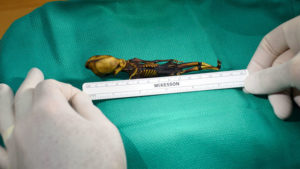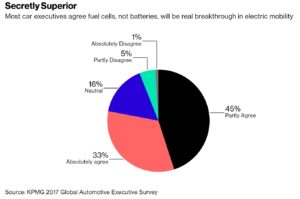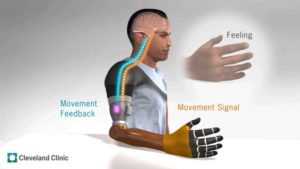Mar
30
2018
 Sleep is critical for optimum health and performance, but is often underappreciated by the general public. For example, I see many patients with chronic symptoms that are either caused by or greatly exacerbated by poor sleep, but didn’t make the connection to their chronic insomnia.
Sleep is critical for optimum health and performance, but is often underappreciated by the general public. For example, I see many patients with chronic symptoms that are either caused by or greatly exacerbated by poor sleep, but didn’t make the connection to their chronic insomnia.
Not only is adequate quality sleep necessary, people have different daily (“circadian”) rhythms – some people are most alert in the morning, others mid-day, and still others in the evening. Further, this does not seem to be due entirely to habits, and therefore we cannot just tell night owls to go to bed earlier. They are not in control of their biological rhythm.
The sleep rhythm is affected by light levels and seasonal differences, so there is some room for tweaking the environment to improve sleep overall and adjust the daily cycle. Bright lights and close-up electronic devices are terrible for sleep in the late evening. If someone is having trouble getting to sleep, having 2 hours or so without electronic devices prior to bed time is a good idea. But there are limits here as well – night owls will still be night owls.
A recent study looks at the effect of circadian rhythm on school performance. The hypothesis was that a mismatch between a student’s internal schedule and their forced school schedule would affect performance.
Continue Reading »
Mar
29
2018
 One of the cool things about astronomy is that the universe is a huge place, and we can look in any direction and see lots of stuff. Current estimates are that there are about 2 trillion galaxies in the visible universe. Galaxies vary in size, but have on the order of hundreds of billions of stars.
One of the cool things about astronomy is that the universe is a huge place, and we can look in any direction and see lots of stuff. Current estimates are that there are about 2 trillion galaxies in the visible universe. Galaxies vary in size, but have on the order of hundreds of billions of stars.
What this means is that even if a phenomenon occurs only in one in every billion galaxies, there are still two thousands of them out there for us to find. Or even a one-in-a-million star will occur hundreds of thousands of times in our own galaxy. So the more we look, the rarer and rarer stuff we will find.
Recently astronomers happened upon one such rare occurrence – a galaxy that appears to be devoid of dark matter. That’s not supposed to happen, so if it is confirmed by longer study will have significant implications for our understanding of the universe.
Dark matter is material that has a gravitational effect that we can observe, but does not radiate and so is “dark”. The existence of dark matter was first proposed by Fritz Zwicky to explain the apparent rotation of observed galaxies. Based on Newton’s gravitational equations, we can calculate how fast a galaxy should rotate based on how much mass it contains. Another way to look at this, if we observe how fast a galaxy is rotating, we can calculate how much mass it should contain. If it contained less than the needed mass, the stars would be flung away by their observed velocity.
Continue Reading »
Mar
27
2018
 There are scientific advances, and then there are advances that help us make more scientific advances. The latter are often trickier to communicate to the public, because their connection to any tangible benefit is indirect. But improvements in research technology itself can have incredible potential to transform our future.
There are scientific advances, and then there are advances that help us make more scientific advances. The latter are often trickier to communicate to the public, because their connection to any tangible benefit is indirect. But improvements in research technology itself can have incredible potential to transform our future.
One category of scientific instruments that I am particularly interested in, as a neuroscientist, are ways to scan the brain, both anatomically and functionally. A functional scan is one that looks at how the brain is functioning in real time, it looks at the pattern of activity of brain cells. If we can correlate this brain activity with specific tasks, then that will teach us something about how the brain works.
Using this type of technology scientists are trying to reverse-engineer the brain, to map all of its connections (the connectome) and learn what the brain’s networks actually do. The ultimate goal is to be able to simulate those networks in a computer, or to build a computer that works like the brain. That would be the ultimate brain research tool – then you could run countless simulations and tests and see how the various networks in the brain behave.
As an aside, it’s likely that even a simulated brain, if it were functioning, would be self-aware. That raises a lot of ethical question in terms of further research.
Continue Reading »
Mar
26
2018
 In 2016 Steven Greer released his documentary, Sirius, which tries to make the case for a deep conspiracy to hide the truth of aliens and free energy. Part of the documentary was to showcase possible evidence for aliens, including the Atacama desert mummy, a six-inch mummy of what appears to be a malformed fetus.
In 2016 Steven Greer released his documentary, Sirius, which tries to make the case for a deep conspiracy to hide the truth of aliens and free energy. Part of the documentary was to showcase possible evidence for aliens, including the Atacama desert mummy, a six-inch mummy of what appears to be a malformed fetus.
Greer and other UFO enthusiasts thought the mummy looked like an alien, with its cone-shaped head and strange anatomy. There are certainly a lot of anomalies to point to in the mummy, but just pointing to anomalies does not result in scientific conclusions. The documentary takes pains to point out that the mummy is not a crafted hoax, but the remains of a living creature. This is true, but misses the real criticism of the alien hypothesis. It is the remains of a living human.
Recently DNA analysis of the mummy found that it was indeed human. And now further analysis shows that it was a human female of mixed heritage with many newly found mutations in genes that code for bone proteins. The mummy itself is probably only decades old, as the DNA was well-preserved.
These results are not surprising, and we may learn something about genetic bone disease from studying the effects of the newly discovered mutations.
Continue Reading »
Mar
23
2018
 Right now fossil fuels are the king of transportation fuel. They are relatively inexpensive, energy dense, and highly convenient. Burning gasoline produces a lot of energy for acceleration, but the fuel is also relatively stable (it won’t just explode), and usable over a large temperature range. You can quickly fill up your car with gasoline, have a long range on one tank, and there are filling stations everywhere.
Right now fossil fuels are the king of transportation fuel. They are relatively inexpensive, energy dense, and highly convenient. Burning gasoline produces a lot of energy for acceleration, but the fuel is also relatively stable (it won’t just explode), and usable over a large temperature range. You can quickly fill up your car with gasoline, have a long range on one tank, and there are filling stations everywhere.
In many ways gasoline is an ideal fuel, which is why it has reigned supreme for a century. But gasoline isn’t perfect, and the downsides to fossil fuels are coming home to roost. Burning fossil fuels releases pollution that impacts quality of life and causes significant health problems and costs. It also releases previously sequestered carbon into the atmosphere, which is building up and causing climate change.
Further, many of the countries that are a major source of crude oil are not exactly stable democracies. And finally, there is a finite supply of crude oil. It is still not clear what the total remaining reserves are, and the figures change whenever new sources are found and new technologies are developed to extract more oil from existing wells. But no matter what, there has to be finite supplies of oil that will run out eventually.
All of these downsides are why we seem to be living in a transition point away from fossil fuels in general, but especially for transportation. Every automaker seems to think that fossil fuel engines are on the way out, and the trend away from fossil fuel is pretty clear. The real question is – what technology will replace it?
Continue Reading »
Mar
22
2018
 2,800,000,000,000,000,000,000 bytes
2,800,000,000,000,000,000,000 bytes
That’s 2.8 zettabytes, or 2.8 billion terabytes.
That is roughly how much data there is in the world today, with 2.5 exabytes (quintillion bytes) being added every day. This increase is not linear, but geometric. Ninety percent of all the data ever produced by humanity was produced in the last two years. There are increasingly science projects coming online that are using massive amounts of data. The Brain Research through Advancing Innovative Neurotechnologies (BRAIN) Initiative to map the human brain will have to deal with yottabytes of data (a yottabyte is 1000 zettabytes).
Storing all this data is already a challenge, one which will get orders of magnitude more challenging. There are several hurdles. The first is that we need the physical space to store all this data – we need the hard drives, optical discs, tape storage, or whatever media we use.
Second, storing and migrating all this data uses energy. The current estimate is that 3% of global energy output is used to store data. And again, this will only increase. On a separate but related issue, we also have to think carefully about global processing and storage intensive tasks, such as cryptocurrency. They may have a certain utility, but the blockchain process uses a lot of energy.
Continue Reading »
Mar
20
2018
 In general, which demographic is more supportive of free speech, a college student who identifies as an extreme liberal, or a non-college educated conservative? How has overall support for free speech, even “politically incorrect” speech, changed over the last few decades? The answers to these questions may seem obvious, and that’s the point, because the actual facts run contrary to common perception.
In general, which demographic is more supportive of free speech, a college student who identifies as an extreme liberal, or a non-college educated conservative? How has overall support for free speech, even “politically incorrect” speech, changed over the last few decades? The answers to these questions may seem obvious, and that’s the point, because the actual facts run contrary to common perception.
Researcher Justin Murphy recently published aggregated results of surveys regarding tolerance of different kinds of speech. There is also a good discussion of this data on Vox, but here is the quick overview:
- Tolerance of speech or support for free speech has been overall rising over the last few decades
- Self-identified extreme liberals are the most supportive ideological group of free speech
- College/University education correlates with increased tolerance of speech.
- The most intolerant group are non-college educated, and the type of speech about which they are most intolerant are anti-American Muslims.
Of course, there are always potential confounding factors in surveys. But the data here are pretty clear – overall support for free speech is high and rising, and is highest among the college-educated and liberals. The surveys looked at tolerance of various groups: antitheists, homosexuals, racists, communists, militarists, and anti-American Muslims. For every type of speech tolerance has been rising among every ideological group, except for tolerance of racist speech among moderate liberals (still increasing among extreme liberals), and tolerance of anti-American Muslim speech among conservatives. The decrease in tolerance for racist speech may be due to an increase in African Americans, who are less tolerant overall of racist speech, among that demographic.
What you will not find in this data is support for the common narrative that we have a free speech crisis on college campuses in America, driven by political correctness on the left. That narrative is essentially a myth. Like many popular beliefs, it does not survive confrontation with actual facts.
Continue Reading »
Mar
19
2018
 In the 1970s and 80s belief in the paranormal was the most common target of skeptics. Topics like extrasensory perception (ESP), astrology, and faith healing were at the top of the list of skeptical concerns. In the last 30 years skepticism has evolved quite a bit, and while we never stopped being watchdogs on paranormal beliefs and other pseudosciences, they did mostly fade into the background. Other topics, such as science denial and the rise of fake news, took center stage.
In the 1970s and 80s belief in the paranormal was the most common target of skeptics. Topics like extrasensory perception (ESP), astrology, and faith healing were at the top of the list of skeptical concerns. In the last 30 years skepticism has evolved quite a bit, and while we never stopped being watchdogs on paranormal beliefs and other pseudosciences, they did mostly fade into the background. Other topics, such as science denial and the rise of fake news, took center stage.
But history has shown that there is often a cycle to such things. Interest in UFOs has waxed and waned over the years, for example, never going away completely, but fading and then rising again to prominence as a new generation discovers the topic.
Still, we do like to think we are making some progress through exposure and education. We have tried to interact frequently with the press so that at least the skeptical point of view will get better exposure when such topics are addressed. One solid victory was when the BBC announced they will no longer follow a pattern of false balance when dealing with science denial – putting a crank up against the consensus of scientific opinion as if they were equal.
A recent episode of CBS Sunday Morning about ESP, however, was worse than false balance, it was a throwback to the early days of credulous reporting about the paranormal with only token skepticism. Not that token skepticism was gone, but it has become more rare, especially from a major network or news outlet.
The piece, by Erin Moriarty, is a complete journalistic fail. It was the kind of piece we used to see thirty plus years ago before the skeptical movement had any traction. It is a perfect example of what we call token skepticism – a piece that is utterly gullible except for a very brief talking head skeptic who says something generic, like, “There is no scientific evidence to support this.” The token skepticism is immediately negated, however, by some response from the true-believer, a response the skeptic is never allowed to respond to in turn.
Continue Reading »
Mar
15
2018
 We continue to make incremental improvements in robotic artificial limbs, and now researchers report one more – kinesthetic feedback. This is a sense that your limb is moving under your control.
We continue to make incremental improvements in robotic artificial limbs, and now researchers report one more – kinesthetic feedback. This is a sense that your limb is moving under your control.
What the engineers did is include a mechanism to make the robotic arm vibrate when it moves. The vibration gives the user sensory feedback that mimics movement. This is similar to the haptic feedback that some video game controllers give, to enhance the illusion that you are wielding an actual item rather than just a plastic controller.
In the study this vibrational feedback was successful in creating the illusion of control, meaning that the users felt as if they controlled their robotic limb. However, they still did not feel as if they owned their robotic limb, like it was part of them, which is another hurdle engineers will have to solve.
I found it interesting that they referred to this effect as an illusion, which I think is accurate, but I want to emphasize that our normal sense of agency and ownership is an identical illusion. The same circuits in the brain that give you the subjective sense that you occupy, own, and control your various body parts are the same ones that would potentially create this sensation in a robotic limb.
This is precisely why a robotic limb can work and ultimately feel natural. All we need to do is close the loop on these brain circuits.
Continue Reading »
Mar
13
2018
 One of the challenges of communicating science is getting the right balance between enthusiasm and realism. Science can be truly exciting, but it’s easy to overhype something. Too often lazy journalists oversell a science news item, exaggerating prior ignorance and the significance of the new finding. Every discovery is a “breakthrough” and every advance is a “game-changer.”
One of the challenges of communicating science is getting the right balance between enthusiasm and realism. Science can be truly exciting, but it’s easy to overhype something. Too often lazy journalists oversell a science news item, exaggerating prior ignorance and the significance of the new finding. Every discovery is a “breakthrough” and every advance is a “game-changer.”
For technology advances there is a tendency to overestimate short term progress, and the applicability of the new gadget or technique, while glossing over obstacles and downsides. It takes work to find what is truly interesting about a news item, while putting it into proper context.
That is why I am struggling a bit with this current news item, because this technology, if we ever pull it off, would be a true game-changer. It is hard to overestimate the impact that it would have. I am talking about fusion energy. This is not to be confused with cold fusion, which is probably a fantasy, but actual hot fusion, the kind that powers the sun.
MIT researchers announced in an article for Nature that they believe they are 15 years away from a commercial fusion power plant. If true, this is huge news.
Continue Reading »
 Sleep is critical for optimum health and performance, but is often underappreciated by the general public. For example, I see many patients with chronic symptoms that are either caused by or greatly exacerbated by poor sleep, but didn’t make the connection to their chronic insomnia.
Sleep is critical for optimum health and performance, but is often underappreciated by the general public. For example, I see many patients with chronic symptoms that are either caused by or greatly exacerbated by poor sleep, but didn’t make the connection to their chronic insomnia.
 One of the cool things about astronomy is that the universe is a huge place, and we can look in any direction and see lots of stuff. Current estimates are that there are about
One of the cool things about astronomy is that the universe is a huge place, and we can look in any direction and see lots of stuff. Current estimates are that there are about  There are scientific advances, and then there are advances that help us make more scientific advances. The latter are often trickier to communicate to the public, because their connection to any tangible benefit is indirect. But improvements in research technology itself can have incredible potential to transform our future.
There are scientific advances, and then there are advances that help us make more scientific advances. The latter are often trickier to communicate to the public, because their connection to any tangible benefit is indirect. But improvements in research technology itself can have incredible potential to transform our future. In 2016 Steven Greer released his documentary,
In 2016 Steven Greer released his documentary,  Right now fossil fuels are the king of transportation fuel. They are relatively inexpensive, energy dense, and highly convenient. Burning gasoline produces a lot of energy for acceleration, but the fuel is also relatively stable (it won’t just explode), and usable over a large temperature range. You can quickly fill up your car with gasoline, have a long range on one tank, and there are filling stations everywhere.
Right now fossil fuels are the king of transportation fuel. They are relatively inexpensive, energy dense, and highly convenient. Burning gasoline produces a lot of energy for acceleration, but the fuel is also relatively stable (it won’t just explode), and usable over a large temperature range. You can quickly fill up your car with gasoline, have a long range on one tank, and there are filling stations everywhere. 2,800,000,000,000,000,000,000 bytes
2,800,000,000,000,000,000,000 bytes In general, which demographic is more supportive of free speech, a college student who identifies as an extreme liberal, or a non-college educated conservative? How has overall support for free speech, even “politically incorrect” speech, changed over the last few decades? The answers to these questions may seem obvious, and that’s the point, because the actual facts run contrary to common perception.
In general, which demographic is more supportive of free speech, a college student who identifies as an extreme liberal, or a non-college educated conservative? How has overall support for free speech, even “politically incorrect” speech, changed over the last few decades? The answers to these questions may seem obvious, and that’s the point, because the actual facts run contrary to common perception. In the 1970s and 80s belief in the paranormal was the most common target of skeptics. Topics like extrasensory perception (ESP), astrology, and faith healing were at the top of the list of skeptical concerns. In the last 30 years skepticism has evolved quite a bit, and while we never stopped being watchdogs on paranormal beliefs and other pseudosciences, they did mostly fade into the background. Other topics, such as science denial and the rise of fake news, took center stage.
In the 1970s and 80s belief in the paranormal was the most common target of skeptics. Topics like extrasensory perception (ESP), astrology, and faith healing were at the top of the list of skeptical concerns. In the last 30 years skepticism has evolved quite a bit, and while we never stopped being watchdogs on paranormal beliefs and other pseudosciences, they did mostly fade into the background. Other topics, such as science denial and the rise of fake news, took center stage. We continue to make incremental improvements in robotic artificial limbs, and now researchers report one more –
We continue to make incremental improvements in robotic artificial limbs, and now researchers report one more –  One of the challenges of communicating science is getting the right balance between enthusiasm and realism. Science can be truly exciting, but it’s easy to overhype something. Too often lazy journalists oversell a science news item, exaggerating prior ignorance and the significance of the new finding. Every discovery is a “breakthrough” and every advance is a “game-changer.”
One of the challenges of communicating science is getting the right balance between enthusiasm and realism. Science can be truly exciting, but it’s easy to overhype something. Too often lazy journalists oversell a science news item, exaggerating prior ignorance and the significance of the new finding. Every discovery is a “breakthrough” and every advance is a “game-changer.”




